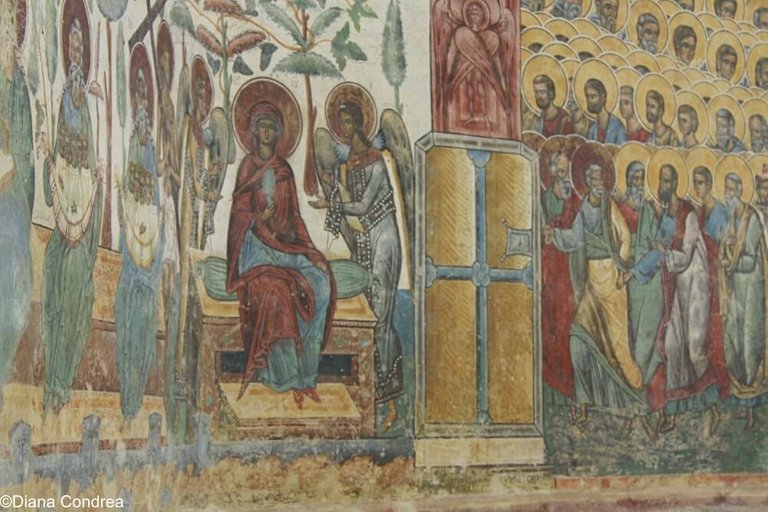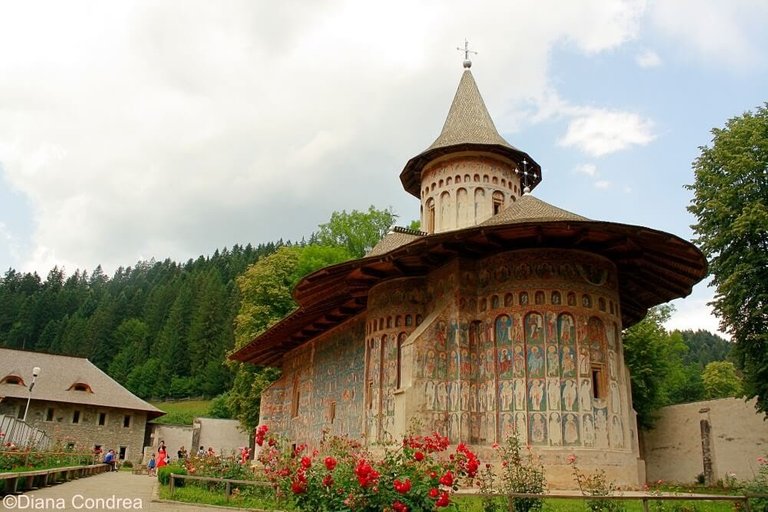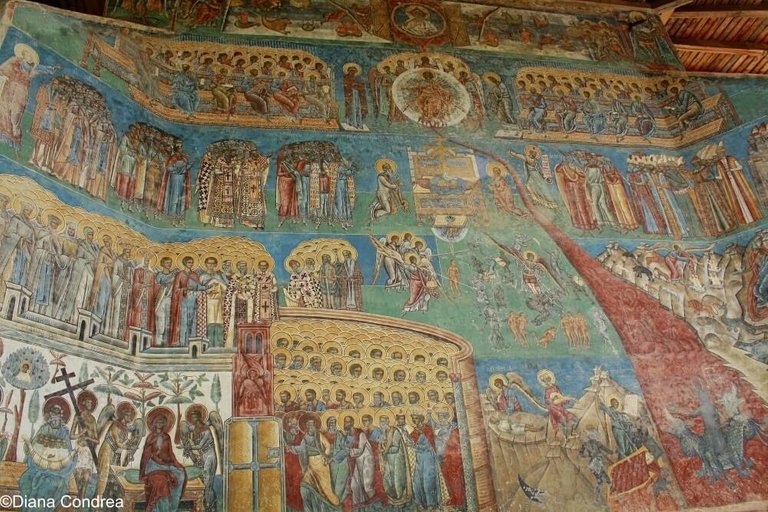
You don’t have to be very religious to enjoy a visit to Voronet Monastery where you’ll see the most famous of the painted churches of Bucovina. Included today on the UNESCO World Heritage List together with six more churches from the region, this religious monument is a unique symbol of how local medieval princes emphasized their great support for the Orthodox faith in a time when its existence was threatened by the expansion of the Ottoman Empire.

The Sistine Chapel of the East
Also known as the ‘the Sistine Chapel of the East’ due to its splendid frescoes, the church of the Monastery of Voronet was built in just a couple of months, in 1488, by Stephen the Great, the most popular prince of Moldavia, after one of his victories against the Ottoman armies. This was a common practice of the prince who promoted an architecture known as the Moldavian style. Many of the churches built this way are still preserved until today in the regions of Moldavia and Bucovina.
Of small, but well-balanced proportions, the church of Voronet Monastery is representative for the Moldavian style, having also Gothic and Byzantine-inspired elements. It was from the very beginning more than a religious edifice. Its frescoes highlighted the moral stories of the Bible for the illiterate villagers of the time, persuading them to act according to the Christian norms. Exquisite testimonies of their painters’ talent, the frescoes of Voronet conserve a centuries-old secret. The distinct ‘Voronet blue’ color is unique in the world, and its composition is almost impossible to replicate today.

Religion on walls
The 15th and 16th-century frescoes are the main attraction of the church, a masterpiece of Byzantine art. The interior paintings date from the time of the founder, Prince Stephen the Great, portrayed in the nave together with his family. Major Biblical scenes, focused on the life of Virgin Mary and Jesus, occupy the nave, while the narthex presents the story of Saint George and the Orthodox calendar in the small and very vivid scenes of Byzantine inspiration.
Still, the exterior frescoes added in 1547 remain the most impressive. The largest of all is on the western wall, the scene of the ‘Last Judgment’, in a singular representation for the Eastern Christianity. An ample story of the last day and its tragic or happy ending, the scene should be read from the lower part where the image of heaven appears in opposition to the river of fire and a very happy Satan that greets the sinners. Coincidence or not, among the sinners are also the non-Christians of the time, the Jews and the Turks.

The angels Michael and Peter have key roles, one opening the gates of heaven while the other pushes sinners to hell. A rare image is the ‘Ressurection of the Dead’ painted across from Moses leading the non-Christians to judgment. In the upper scene, next to the Throne of Judgement, groups of saints who already made it to heaven sit close to Jesus portrayed as Great Judge. A rare representation of God and the angels that fold a scroll with the zodiacal signs, a symbol for the end of time as we know it, occupy the last two registers.
To make it more representative for the local community, the painters added some symbols of local culture including musical instruments, traditional clothing and nearby landscapes. Many more symbolic characters, including Adam and Eve or Greek philosophers, are painted on other exterior walls of the monastery.
The monastic life at Voronet was interrupted at the end of the 18th century after Bucovina was conquered by the Habsburg Empire, and it started again only in 1991. Today, Voronet Monastery is one of the must-see attractions of Romania, and during summers is one the most popular destinations in the scenic land of Bucovina.
Post from UnderCover Romania, by Diana Condrea
Hello,
Copying/Pasting full texts without adding anything original is frowned upon by the community.
These are some tips on how to share content and add value:
Repeated copy/paste posts could be considered spam. Spam is discouraged by the community, and may result in action from the cheetah bot.
If you are actually the original author, please do reply to let us know!
Thank You!
More Info: Abuse Guide - 2017.
Hi! I am a robot. I just upvoted you! I found similar content that readers might be interested in:
http://www.uncover-romania.com/attractions/culture/unesco-heritage/voronet-monastery.html